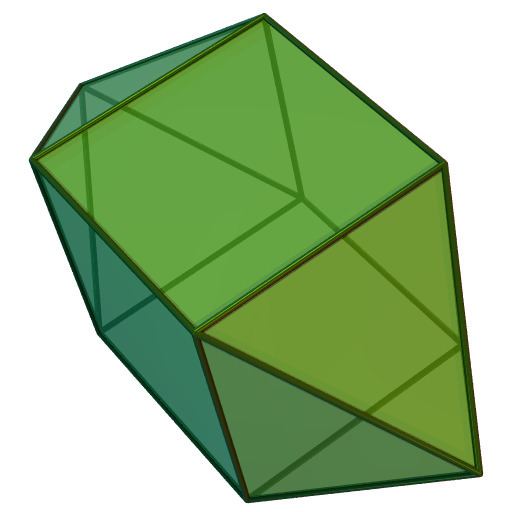Faces 8 triangles4 squares Vertices 10 Symmetry group D4h, [4,2], (*422) | Edges 20 Vertex configuration 2(3)8(3.4) | |
 | ||
Type JohnsonJ14 - J15 - J16 | ||
In geometry, the elongated square bipyramid is one of the Johnson solids (J15). As the name suggests, it can be constructed by elongating an octahedron by inserting a cube between its congruent halves.
Contents
It has been named the pencil cube due to its shape.
A Johnson solid is one of 92 strictly convex polyhedra that have regular faces but are not uniform (that is, they are not Platonic solids, Archimedean solids, prisms or antiprisms). They were named by Norman Johnson, who first listed these polyhedra in 1966.
A zircon crystal is an example of an elongated square bipyramid.
Dual polyhedron
The dual of the elongated square bipyramid is called a square bifrustum and has 10 faces: 8 trapezoidal and 2 square.
Related polyhedra and honeycombs
A special kind of elongated square bipyramid without all regular faces allows a self-tessellation of Euclidean space. It can be considered a transitional phase between the cubic and rhombic dodecahedral honeycombs. The cells are here colored white, red, and blue based on their orientation in space. The square pyramid caps have shortened isosceles triangle faces, with six of these pyramids meeting together to form a cube.
The triangles of this elongated square bipyramid are not regular; they have edges in the ratio 2:√3:√3.
With regular faces, the elongated square bipyramid can form a tessellation of space with tetrahedra and octahedra. (The octahedra can be further decomposed into square pyramids.) This honeycomb can be considered an elongated version of the tetrahedral-octahedral honeycomb.
